While the Saturn had a variety of great controllers and peripherals, a vast majority would agree that the 3D Analog Control Pad was perhaps one of the greatest. Dreamcast also touted several of its own clever and innovative add-ons, but most folks can’t deny the shear brilliance and significance of the VMU (Visual Memory Unit). These innovations lead the way as industry firsts and would be copied and iterated upon by SEGA and others.
Imagine our surprise then, when SHIRO! recently had the opportunity to interview the very man, Kenji Tosaki, responsible for creating these awesome devices (in addition to many others) in an open forum question & answer session, where several members of our community were able to participate! We were honored to host this absolute legend of gaming history and were surprised by several fascinating pieces of previously unknown information that Tosaki-san revealed. It is with great pleasure and excitement that we share this interview with you now. We hope you enjoy!
NOTE: This interview was conducted in a non-linear fashion, consisting of several individual questions submitted out of order. SHIRO! has cut it together into a conversational format, for the sake of continuity and for your reading pleasure. Tosaki-san suggested this approach, as he specifically desired for this to be an open forum question & answer session, in which all community members could participate. Thank you.
SHIRO!: Welcome to the group, Tosaki-san! We greatly appreciate you joining us for this interview. Can we start by asking what it was it like working for SEGA? What projects did you work on?
TOSAKI: At that time, I was a peripheral development manager at SEGA. I was mainly in charge of the game controllers & input devices. For the SEGA Saturn, I was in charge of the 3D Control Pad & the Virtua Gun (aka Stunner). For the SEGA Dreamcast, I was in charge of the console’s industrial design as well as the controller, the VMU and the interface design for peripheral devices. It was a long time ago, so my memory is a bit ambiguous, but I’ll answer as best I can.
SHIRO!: I still use the Virtua Gun a lot to this day, and it works super well. I’ve been playing a lot of Virtua Cop lately. Your hardware withstands the test of time!
TOSAKI: The Virtua Gun is a masterpiece. It’s a very good product.
SHIRO!: Did you face any challenges getting the light gun to work on the Saturn?
TOSAKI: There was only one problem with the development of the Virtua Gun… Virtua Cop was so good that SEGA was flooded with Virtua Gun orders. In order to increase the production volume, we had to secure electronic parts, but we couldn’t because they took too long to deliver. Therefore, I made a new board so that it would have the same performance using a completely different circuit. We developed two products that looked the same but had different boards at the same time. It was very hard work.
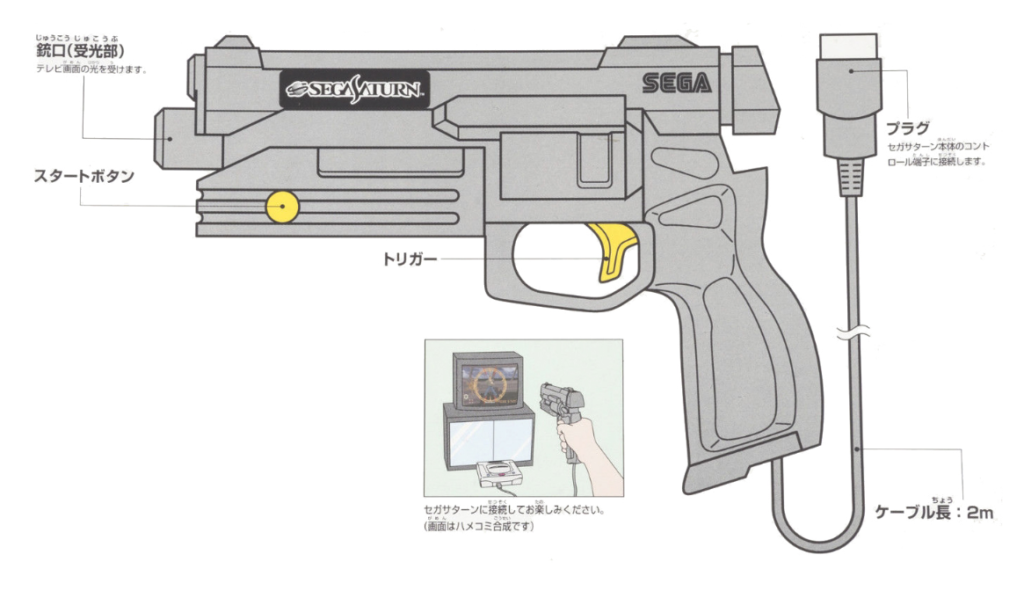
SHIRO!: I remember seeing your name in a Sega Saturn Magazine article! I love your work on the Virtua Gun. Here is an article you were featured in back in 1995.

TOSAKI: I remember that article. I rewrote about half of the article manuscript. I always received the manuscript for the coverage article and I corrected it.
Did you know that when disassembling the Virtua Gun, there is space for AA batteries at the barrel and grip? You can insert the batteries as a weight. The recommendation is to put it only in the grip. The weight balance of the light gun will be better, and it will be easier to play! It was my idea to create a space for batteries.


SHIRO!: I had no idea, that is amazing! I am going to try this out tonight.
When you were designing the 3D Control Pad, were you aware of specific games that were being designed to use it? Was it a collaborative process with the game developers? For example, NiGHTS feels tailor made for the controller. Was that an instance of the game being designed for the controller or the controller being designed for the game?
TOSAKI: Hardware is meaningless without game software… Game software will always be released specifically, and peripherals will be developed accordingly. Saturn’s 3D Control Pad was developed very specifically for NiGHTS into Dreams…

SHIRO!: The 3D Control Pad is actually compatible with several games released before the controller came out, like Daytona USA. Can you talk about how you made this controller compatible with earlier SEGA Saturn games?
TOSAKI: Many games support the 3D Control Pad because we decided on the data format first and distributed several prototype samples to the software development teams. We distributed the toolkit to third parties after the product sample was ready, so it would be a while before the number of [third-party] compatible games increased. However, I secretly shared the data format to the third-party developers for the shooter “Soukyuugurentai” (蒼穹紅蓮隊) . I knew them personally, and I asked them to support it.
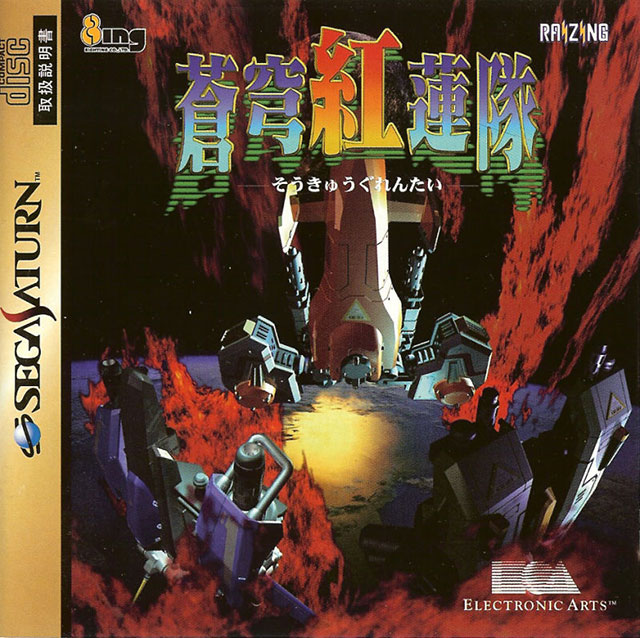
SHIRO!: What inspired the look of Saturn’s 3D Control Pad? Was the design strictly functional?
TOSAKI: Nothing really inspired it… Is it functional or visually impressive? The balance between design and styling is important, but I just wanted to give it a rounded shape, that’s all…

Being round, it had the additional functionality for one to grip it like a steering wheel, when equipped with a gyro sensor pack (which there was a design patent for). Originally, it was planned to commercialize it with a small and round design, with a small grip as described in the patent application materials.

However, when the design was completed and the mold was being manufactured, an officer suggested that the grip be larger. From there, the styling and design was redone, and the 3D controller was completed with a design that added grips.

SHIRO!: Were any prototypes of extra add-ons made for the detachable slot?
TOSAKI: I completed the prototype for the Rumble Pack. I was experimenting with how it feels depending on the weight of the vibration motor and the number of revolutions.

I also completed a prototype for the Motion Pack using a gyro sensor, which I was experimenting with NiGHTS into Dreams…

Commercialization of the Rumble Pack was under consideration. However, even though a prototype was produced, since the 3D Control Pad was an optional peripheral device (sold separately), it was concluded that it would be difficult to sell an additional optional device (essentially a peripheral for a peripheral), so the project was cancelled.
SHIRO!: Do any existing games have programming code that utilizes this rumble pack? (Even if the code has been turned off or disabled)?
TOSAKI: There should think there would be no compatible games…
I don’t believe I ever decided on a communication format or gave any samples to the software development teams, so I really don’t know.
SHIRO!: What would be your personal favorite planned expansion module for the 3D Control Pad?
TOSAKI: I wanted to make a light gun unit. I already had a trigger. I hadn’t started developing or anything (just planning), but a light gun attachment would be my favorite.
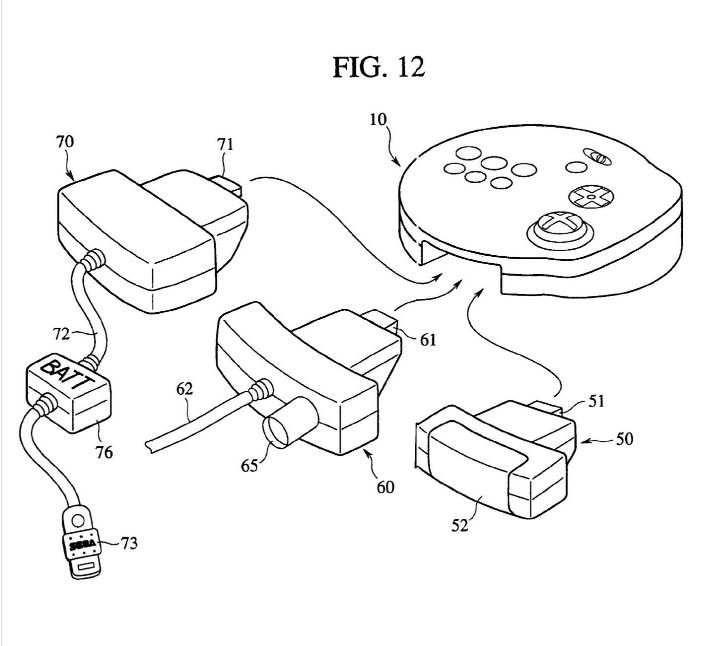
SHIRO!: Have you ever considered that your analog pad possibly changed 3D gaming forever? Every console that came after the Saturn has used one!
TOSAKI: I think the N64 and Mario 64 were the ancestors of 3D controllers in the history of game consoles, and they changed everything. I have great respect for the N64 controller, and its 3D analog stick was a great invention. The analog sensor is a rotary encoder just like a ball mouse. We also had several meetings with Nintendo and the staff that developed the N64 controller. I respect them a lot.




SHIRO!: So how do you feel the N64’s analog rotary encoder compares to your magnetic sensor?
TOSAKI: I can’t speak to the durability of N64’s analog stick, however, I do think Saturn’s 3D Control Pad may have been better in terms of accuracy, but I’m not sure… I like the fact that the 3D Control Pad was very accurate and highly durable. It doesn’t move by itself, even if I take my finger off. It used a no-contact magnetic sensor; therefore, it saw no deterioration due to wear. The internal plastic parts were made from specially developed materials that are highly durable.
SHIRO!: It’s really a shame that modern 3D analog solutions implement inferior patents that are not as accurate and wear out quickly. Is there any possibility of a future control pad that utilizes your input technology?
TOSAKI: I don’t think that technology will ever be commercialized again. It’s not easy to design… All the original molds and production equipment for the 3D Control Pad were scrapped (It’s a 20-year-old product after all, so it can’t be helped). The 3D Control Pad measures the tilt angle of the pad with a magnet and a magnetic sensor. Due to its structure, it does not output in direct proportion to the tilt angle. It is rather output as a complicated curve. In addition, there is a tolerance in the output, depending upon the force of the magnet and the accuracy of each part. I simulated how much tolerance would occur with a supercomputer. Then, we completed an algorithm that converts the sensor value output by a complicated curve into a directly proportional output. It is programmed into the CPU installed in the 3D Control Pad. (Each 3D Control Pad contains a CPU and chipset). Of course, this custom CPU uses an old manufacturing process and can’t be produced now. I am proud of what a great product it is.

Sony’s current 3D sticks are adopted from the PlayStation’s Dual Shock Controller, and since then, both Nintendo and Microsoft have licensed the same technology. This stick is a unit that has existed for a long time using a volume resistor. Durability is poor, and the center point shifts easily. I definitely did not want to adopt it [when designing the 3D Control Pad], so I had excluded this method from consideration. Volume resistance will continue to be the mainstream, though I do not like the feeling or performance.

SHIRO!: What is your favorite Saturn game?
TOSAKI: I never really played games for the purpose of enjoyment… I played them to think of ways to make them control better. But I guess I would say I played Sega Rally and Virtua Fighter a lot.
SHIRO!: Do you know anything about the Virtua Fighter 3 accelerator board for Saturn?
TOSAKI: I had an idea for an accelerator cartridge. However, it was expected to be too expensive to manufacture and the performance was not high enough to justify the costs, so it would have been canceled. If the planning had progressed to the stage of considering commercialization, the industrial design team would have started moving, but that was not the case…

SHIRO!: Sonic Adventure is listed among your credits (for hardware support). What did that work entail? Did you have any involvement in implementing the Chao Garden or VMU support?
TOSAKI: I have worked closely with Naka-san since the development of Nights and 3D controllers. Naka-san was planning a new Sonic game (Sonic Adventure), and I was planning a new controller.

When I proposed the VMU, Naka-san liked it. And he used it for Sonic Adventure.

SHIRO!: You mentioned working on Dreamcast’s industrial design. Did you design the console’s shell? What else did you design?
TOSAKI: I’m not an industrial designer, but I was manager of the industrial design team, and I oversaw the planning and decision-making process for its product design. I remember that development of the Dreamcast controller started right after the development of Saturn’s 3D Control Pad. I planned the initial design concept and was in charge of research for the man-machine (control input) interface, which also started around that time.
SHIRO!: Was there a specific reason for not including two analog sticks after Sony and other third-parties had done so?
TOSAKI: It was the game developers that didn’t want dual analog 3D sticks at all. Interestingly, Sonic’s Yuji Naka suggested a controller that looked like a vertical TV remote. I suggested that it should be equipped with a gun pointer and a gyro sensor. Putting the two ideas together, it looked similar to a Wii remote (though it wasn’t supported by anyone), so a few years later, I was surprised when I saw the Wii. I really respect Nintendo.
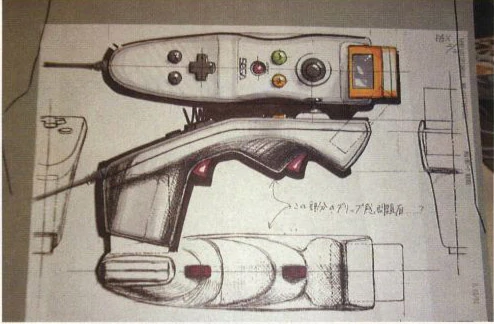

SHIRO!: What was the thought process behind changing the Dreamcast controller from the 3D Control Pad’s 6-Button layout, to just the 4 face buttons?
TOSAKI: I actually prefer the 6-Button layout (ABC XYZ), because it is SEGA’s identity, and I had wanted to use it for the Dreamcast controller. Even the peripheral development team agreed. So, at first, we were planning to use 6 buttons, however, many SEGA game developers wanted to make their game’s control simpler. Many were opposed the 6-button layout. But what about fighting games? It was thought that fans of fighting games would just buy a joystick, so there was no problem… Thus, game creators, marketing departments and executives decided to adopt four buttons. Let’s just say the arcade stick sold well…
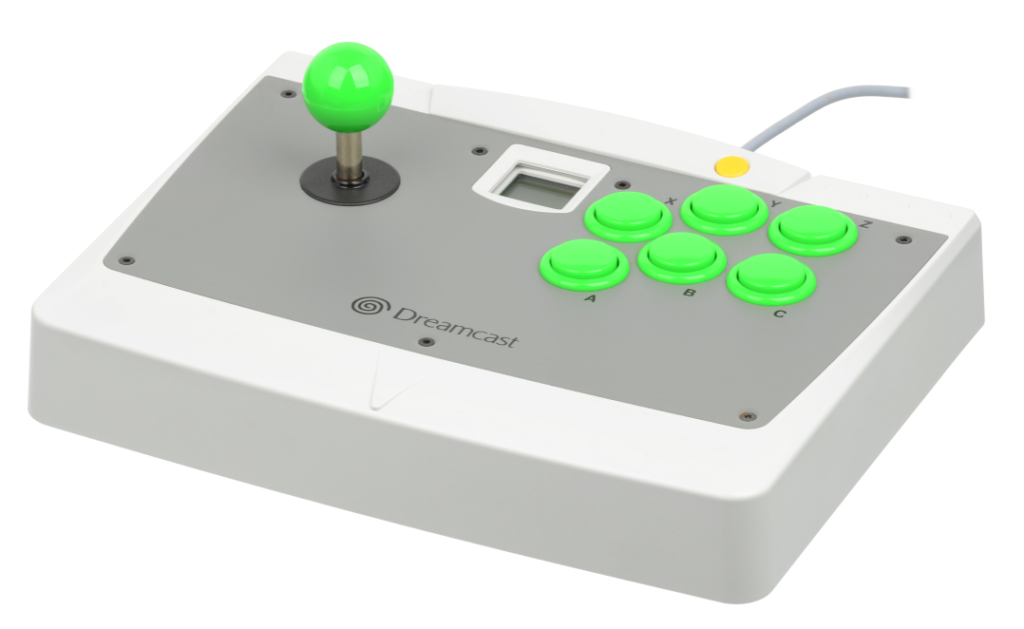
SHIRO!: What would be the favorite of your own hardware designs (either produced or never produced)?
TOSAKI: My favorite is SEGA Saturn’s Virtua Gun.

SHIRO!: Do you have any secrets that you are now allowed to talk about during your time at Sega? For example, did you get to playtest any software that wasn’t released?
TOSAKI: I did have the opportunity to play some unreleased games, prototype games, etc.., although I’m not that interested in the software side of things, so my memory in that regard is limited…
However, the “Virtua Visor” is one piece of information that has not been released to the media until now… I can share that story with you here...


First of all, the “Virtua Visor” is known only to a small number of people within SEGA. (only people who were directly involved with the project at SOJ, SOA & SOE know about it). The software development department shouldn’t even know. In my memory, this is a project I was researching from 1991 to 1997. Of course, it was aimed at commercialization in the future. I started my research around the time of Mega Drive / GENESIS and finished my research just before the Dreamcast project started. I was the project leader. I also did the CAD designs. Sega has many projects that have not been commercialized, and “Virtua Visor” is just one of them. However, I haven’t looked into any of these projects for such a long time. Only I should have the images of the “Virtua Visor”. These were taken by me at that time:


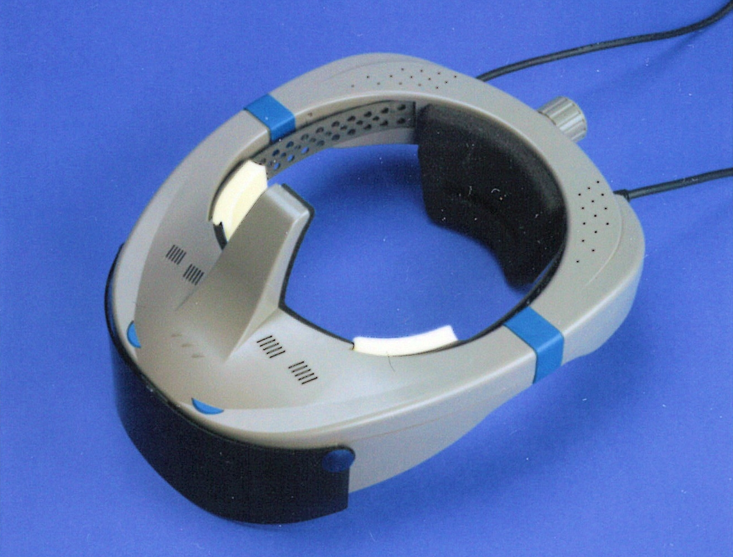

I forgot that I had even applied for a US patent...
“SEGA Virtua Visor” was what we now call VR (the head-mounted display at that time). The components are an LCD, an optical lens, a head tracking sensor, an adjustable headset that can be worn by adults and children and an earphone terminal.
The “smoke shield” on the front opens and closes up and down. Even when closed, the outside world looks slightly transparent. In other words, it is possible to display [graphics] on top of the outside world, instead of a display that completely blocks the outside world. This is MR or Mixed Reality (what we now call AR or Augmented Reality).
We were researching and developing the world’s first home-use VR device that can be used by both adults and children with the aim of commercializing it. We were aiming for a release in the 20th century. The photo I shared is a prototype. I even made a mold. About 30 prototypes were manufactured. I destroyed everything when I left SEGA.
SHIRO!: Wait… Was this at all related to the infamous “SEGA VR”?


TOSAKI: It’s a completely different project, though they are somewhat related. The story around that is one of the subtleties...
Around 1990, when VPL Research announced a VR product and the technology called “Virtual Reality” became a hot topic in Silicon Valley, SEGA’s arcade game division began researching virtual reality. Arcade game developers frequently visited VR-related companies in Silicon Valley and technical exhibitions in the United States.
SEGA was a pioneer of arcade games. They were quicker to welcome new challenges and technologies than other companies, and they created new game trends. They also sought to bring arcade gaming experiences to home consoles. That was SEGA’s strength. As a development leader for home video game console controllers, I frequently exchanged information with the arcade development teams. New ways to play arcades are always fed back to home video game consoles.
In 1991, there was a team in the AM3 Research and Development Department (AM3) that was researching new visual expressions. There was Tetsuya Mizuguchi, who was later famous for producing Sega Rally and Rez. Mizuguchi’s team modified the color LCD game machine “Game Gear” to experimentally prototype a Head mounted Display (HMD).
The board of the game gear and the liquid crystal were placed on the visor part with the liquid crystal inverted, and a mirror installed at an angle of 45 ° was installed in front of me. You see the LCD screen reflected in the mirror.
The resolution of the LCD screen of Game Gear was rough, and there was no head tracking sensor. However, I felt the possibility of the large screen spreading in front of me.
However, there were too many technical issues to commercialize such a product. There are many research topics such as LCD panel size and resolution, eyepieces, how to wear them on the head, hardware for video output, and head tracking sensor.
At that time, Sega’s home video game consoles were in the era of 16-bit game consoles such as the Mega Drive (GENESIS overseas). In the graphics performance of GENESIS, the expressive power of the software was low.
The possibility of a new game was fully felt in virtual reality and HMD. However, at that time, it remained limited to research.
Under such circumstances, there was a rumor that Nintendo was considering HMD based on information from the USA market.
In such a situation, there were rumors that Nintendo seems to be considering HMD.
It was rumored that it would be a three-dimensional display using the display technology of Reflection Technology of USA.
The display was a technology in which a row of red LEDs was projected onto a mirror, and the mirror was shaken left and right to make the LEDs look like a screen as an afterimage. Although the image can only be expressed with shades of red, it was an interesting technique for expressing the image without using an expensive LCD. If you install a display separately for the left and right eyes and look into it, you can express a stereoscopic image.
In fact, Reflection Technology sells technology to various companies, and also came to Sega.
I have also evaluated the sample. It’s a very unique technique, but the red and black display alone lacks expressiveness. The image displayed in the black space had a deeper feeling than I expected, but the features cannot be utilized unless it is made into a stereoscopic image.
At that time, Sega was good at 3D expression with a sense of depth, such as “Space Harrier” and “Afterburner”. However, Sega knew well that it was difficult to create a stereoscopic image (stereogram) in the sense that the image popped out, and that it was difficult to make the most of the gameplay of being stereoscopic.
I knew that if I didn’t actually look at the screen, it would be three-dimensional, and I couldn’t tell how interesting it was, and I had a hard time promoting it.
Sega had already developed a number of 3D games using the LCD shutter type 3D glasses “3D Glass” with the Mark 3 and master system of 8-bit game machines. I knew the difficulties of software development and debugging at that time, and the difficulties of sales.
A game with red and black stereoscopic images. Sega was not very interested in this technique.
VR development at Sega in Japan had not progressed very much.
The impatient SOA has requested that they want to develop it themselves. Silicon Valley at that time was a virtual reality boom. There were many venture companies with technologies and ideas that Japan did not have. There were various proposals from many venture companies directly to SOA.
Therefore, the request of SOA was natural. Sales of GENESIS in the US were strong and strong, and SOA was very aggressive and ambitious. Originally, SOA is a sales company. There was already a GENESIS software development team within SOA. However, there was no hardware development department.
Finally, Sega in Japan finally acknowledged the SOA that they really wanted to develop. SOA has embarked on its own development.
However, research was continuing in parallel with Sega in Japan, that is, my team.
At that time, I was not informed of the movement of SOA. I never imagined that the sales company SOA would develop a very difficult product, VR.
SOA created its own HMD product design proposal and announced its mockup at the 1993 Consumer Electronics Show (CES) as the HMD “SEGA VR” for GENESIS. A very stylish and futuristic design with a black body and red lines. The impact is perfect. It became a sensational topic, such as decorating the cover of popular science magazine as the aim of SOA.
At that time, it was a common practice to announce a mockup (paper model) at the planning stage in the sense of promoting and restraining competition. SOA became more and more motivated to develop in response to more exciting market reactions than expected.
SOA hired hardware engineers, quality control and production control personnel to develop VR. However, it is not easy to develop a product just by gathering people.
In fact, development wasn’t going well. The prototype presented at CES was also very poorly completed. I just attached an eyepiece to the LCD screen and displayed the image, but even that didn’t work properly.
I visited CES where SEGA VR was announced. After the CES, we had a meeting about the design and manufacturing of SOA and VR.
At the meeting at that time, I think that the Japanese side decided to take over the design and manufacture it once it reached the design stage to some extent.
The drawings and samples I saw at that time were not very complete. I didn’t think it was a situation that could be commercialized.
Manufacturing is not easy. Fight Nintendo and create high quality products that can satisfy millions of users around the world. It’s very, very difficult. Many smart engineers and organizations such as quality assurance teams, quality control teams, and production control teams do high-level work and can only do it. It was always difficult and difficult for Sega in Japan.
There was another fundamental problem.
Sega had released stereoscopic glasses “3D glasses” and stereoscopic game software for the master system of 8-bit game consoles for home use. One of SEGA’s strengths is the application of arcade game know-how to home video game consoles. He has always been good at 3D video expression.
However, the video expressiveness of home video game consoles was poor.
It was difficult to hang 3D glasses to develop a game, and it was difficult to hang 3D glasses to debug.
Since the left and right images are displayed in a time-division manner, the frame rate is low, and everyone can feel the strain on their eyes when playing.
Parents with children criticized the game. It was said that the game is bad for the body and it is not good for children to play for a long time
The HMD covers your eyes, so you can’t see the surroundings. What would happen if children used such things alone at home? What if you forget the time and immerse yourself in the game? I was dizzy and collapsed. I couldn’t see the surroundings and fell and was injured. Such an accident may occur.
Video games have been reported to have a negative impact on children. It was sensationally reported as “Nintendo epilepsy” and “Nintendo killed my son”. In the American market, which is a major litigation country, it was feared that it would be a big proceeding.
If it’s an arcade game, a clerk will be next to you. Play time is only about 5 minutes. Even if there is an emergency, the staff can handle it, and if it is about 5 minutes, there will be no serious damage. But home video games are different.
Virtual reality is still used in the laboratory, and its safety and physiological effects have not been studied in the United States. If a lawsuit is filed regarding safety, Sega must prove that it is safe and that there is no problem.
Since losing the patent proceedings in 1992, Sega has been nervous about possible proceedings.
Changes in social conditions have made the problem even more difficult.
Amid concerns about the effects on the human body and safety, the Product Liability Law (PL Law) was enacted in 1994 in Japan.
The PL Law was a law that puts very strict responsibility on manufacturers regarding product safety and quality. This law has changed the consciousness of Japanese companies involved in manufacturing. The quality of the product and the expression of the instruction manual have changed significantly. This is because there were concerns that the number of proceedings like the United States would increase in Japan as well.
Sega became very cautious. No one sells gaming HMDs for consumer use. Such products are not socially recognized. Japanese companies are a good target in the litigation powerhouse of the United States. Such proceedings may also occur in Japan, where the PL law has been enforced.
Since 1994, Sega has launched the game “VR-1” using “Mega Visor Display” in the Japanese arcade game market.
Sega was also cautious about running this game. I was paying close attention to the effects on the player’s physiology, but in reality there were no problems. It was expected that the HMD in an arcade game would be an example of studying the physiological effects, but unlike home games, it has an attendant and the play time is as short as a few minutes, so it is not very useful as data. Did not become.
SOA asked the Stanford Research Institute of the United States to evaluate a sample SEGA VR.
I don’t know the details of the report, but I don’t think the result of the report can be judged as “no problem = white”, and I think it was gray.
In the end, it was decided that the product should not be commercialized if the safety was not verified, and the SEGA VR developed by SOA was suspended without being completed. And the team also broke up.
However, Sega’s headquarters foresaw that the era of HMD would come someday, and research was to continue.
On the other hand, Nintendo released “Virtual Boy” in 1995, which features stereoscopic vision.
However, there was no head tracking sensor, it was just a stationary 3D game machine. The image was also poorly expressive and had no impact. The screenshots of the red, flat game screen didn’t look interesting in magazines or commercials. After all, the sale ended early.
Due to the failure of Virtual Boy, SOA has stopped saying anything about HMDs.
SHIRO!: I’m noticing that the Virtua Visor looks very similar to the Mega Visor, which I believe was developed by AM3 & Virtuality for the Cyber Troopers Network Mercenary (Net Merc) theme park game..?


TOSAKI: Ah, you know it well. That is the arcade MVD, “Mega Visor Display” which was developed by the “Mechatronics Research and Development Department”, a hardware development department for arcades. I was very close to this team. The for this display was used in the Virtua Visor.
SHIRO!: I actually found a quote from Stephen Northcott, who worked with Virtuality on the Dennou Senki Net Merc games. He says:
I also know that we were aiding in the design of a VR HMD (Head Mounted Display) for home use for a console yet to be produced in any form other than a “prototype”. The name I was aware of in 94/95 was the ‘Dreamcast’, which was to have an always on network connection (at least in Japan).
It’s possible that this might have been an add on for the Saturn, or a new iteration I suppose, but that is certainly not what I recall, and the name Dreamcast was used often.
I do remember looking at production prototypes for the HMD with some pretty small LCDS in them for the time, and an incredibly nice form factor compared to our home grown almost industrial design UK HMDs, which were for the original W.Industries / Virtuality VR units. The prototype units I remember even matched the color and style of the Dreamcast console’s casing. Although that could be a red herring as plastic prototypes are often made in those lighter colors.
I do also know that another VR partnership with Sega had not gone well prior to our involvement (perhaps the earlier 91/92 Sega VR unit) with another company, which was why our company was of great strategic interest to Sega, and also perhaps why the whole thing was so dynamic and involved a lot of intensity!
https://archive.ph/UWm11#selection-2815.1-2831.469
TOSAKI: That is very interesting! I didn’t know there was a member of Virtuality PLC working within SEGA. I’m just learning this now. It’s surprising to me that he saw the Virtua Visor. But if he was working with AM3, it makes sense.
I had a lot of discussions about VR with Tetsuya Mizuguchi of AM3. I’ve forgotten that I probably showed the Virtua Visor to Mizuguchi’s team. What is certain is that I had no technical interaction with Virtuality PLC, because I was developing VR for home. SEGA’s arcade team, which had the best know-how in the world, handled VR for arcades, and I wasn’t interested in the technology of other companies.
Wow, by talking about Virtua Visor here, I was able to learn a story I didn’t even know at the time.
SHIRO!: That’s awesome! I’m glad I brought it up. What kind of projects are you working on these days?
TOSAKI: I retired from Sega in 2001, and after that, I developed hardware such as key chain games, card readers for Nintendo DS, card scanners for arcade card games, casino-related items, and special lighting equipment for live performances. Now I’m tired of hardware development and developing web services.
One of the recent key chain games I did was called “Grow up! Musiking”. The game planner was Mr. Sakurai of Smash Brothers, the programmer was Mr. Naito of Land Stalker, and the sound was Mr. Sasaki of Nights. It was released by Sega.
https://game.watch.impress.co.jp/docs/20060309/toy212.htm

SHIRO!: Do you have any hobbies outside of design & engineering?
TOSAKI: My favorite is the car. I am in a rare car called Subaru SVX. I enjoy maintenance and modification.
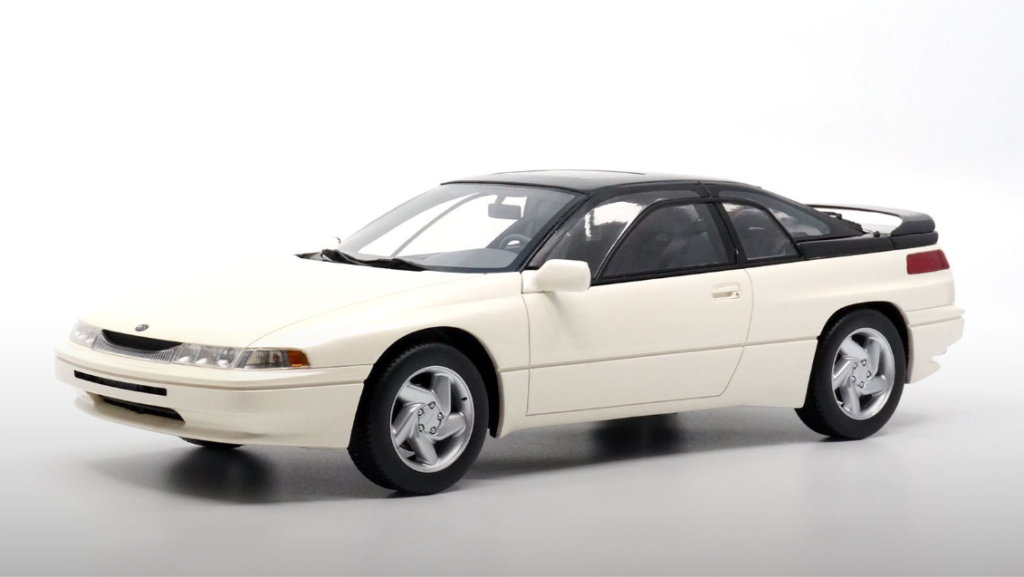
I love watching F1. I majored in internal combustion engine engineering. F1 has the ultimate engine and aerodynamics, and it’s a lot of fun to think about them. We are competing with all industrial technologies and the laws of physics. We have the Monaco Grand Prix tonight and are very excited.
Cars require technology from all disciplines. They are built on simple laws of physics. I think that the basic idea necessary for game entertainment is physics.
Also, I like live entertainment. BABYMETAL is now world-famous, but I’ve been attending live concerts since they were relatively unknown.
SHIRO!: Well, it’s been an honor to have you join us and share so many fascinating bits of information regarding your creations at SEGA. Thank you so much for this opportunity, Tosaki-san!
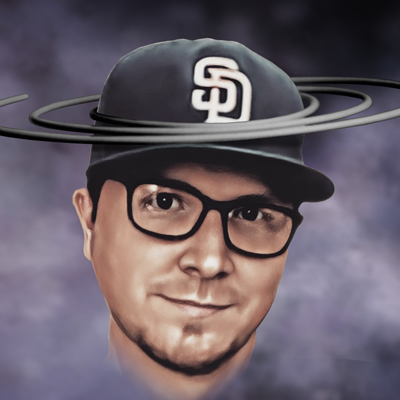
A massive Saturn fan since Christmas ’96, Dave is enthusiastic about growing the community and spreading Saturn love and knowledge to fans old and new. Co-founding the SEGA SATURN, SHIRO! podcast back in 2017 and creating the SHIRO! SHOW in 2020, he seeks to create interesting and engaging Saturn-related content for the community. Dave’s interests circle around game preservation, and he is a huge fan of game magazines and developer interviews.



